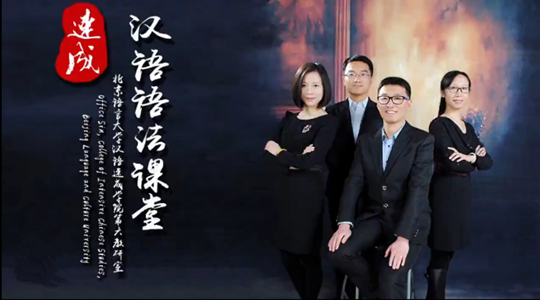
Inorganic Chemistry课程:前往报名学习
“Inorganic Chemistry” provides an essential foundation for undergraduate students in the major areas of physical inorganic principles, chemical equilibrium calculation, an overview structural chemistry, descriptive chemistry of the elements and applications, including catalysis, industrial processes and inorganic materials. These topics form the basis for competency in inorganic chemistry, which are taught over the course of one semester. Over the years, the responsible professor has achieved the excellent.
开设学校:北京工业大学;学科:理学、
“Inorganic Chemistry” provides an essential foundation for undergraduate students in the major areas of physical inorganic principles, chemical equilibrium calculation, an overview structural chemistry, descriptive chemistry of the elements and applications, including catalysis, industrial processes and inorganic materials. These topics form the basis for competency in inorganic chemistry, which are taught over the course of one semester. Over the years, the responsible professor has achieved the excellent.
-Chapter 1 test
-2.3 Enthalpy and Enthalpy Change(H and H)
-2.5 Reaction formula of thermochemical
-Chapter 2 test
-3.1 Basic Characteristics Of Chemical Equilibrium Constant
-3.2 Expression Of Standard Equilibrium Constant
-3.3 Application Of Standard Equilibrium Constant
-3.4 Chemical Equilibrium Movement
-3.5 Influences of Concentration and Pressure on Chemical Equilibrium state
-3.6 Spontaneous Occurrences and Entropy
-3.7 The Third Law of Thermodynamics and Standard Entropy
-3.8 Standard Mole Gibbs Function of Formation
-Chapter 3 test
-4.1 Development of the Concept and Theory of Acid-Base
-4.2 Relative Strength of Acids or Bases and Dissociation Equilibrium of H2O
-4.3 Application of Standard Equilibrium Constant
-4.4 Equilibrium of Dissociation of Salty Solution
-4.7 Buffer Capacity and Calculation of Buffer Solution
-4.8 Overview of Acid-Base Electronic Theory and Coordination Compounds
-4.9 Composition and Naming of Coordination Compounds
-4.10 Coordinated Equilibrium and Related Reaction
-Chapter 4 text
-5.1 Solubility and Solubility Product
-5.2 Formation and Dissolution of Precipitate
-5.3 The Rule of Solubility Product and Common-Ion Effect
-5.4 Influence of the Formation of Complexes on Solubility - Coordination Dissolution of Precipitate
-5.5 Balance Between Two Kinds of Precipitates
-Chapter 5 text
-6.1 Classification of chemical reactions and basic concepts of REDOX reactions
-6.2 Oxidation state and its Value
-6.3 Construction of Galvanic Cell
-6.5 Standard Electrode Potential
-6.7 Application of Nernst Equation
-6.8 Application of Electrode Potential
-Chapter 6 text
-7.1 Development of Atomic Structure Theory
-7.2 Wave-particle duality of electrons
-7.3 The Schrodinger Equation and Quantum Numbers
-7.5 Multi-Electron Atomic Structure
-7.7 Periodic Law of the Elements
-Chapter 7 text
-8.1 Lewis theory and valence bond theory
-8.2 Valence-shell Electron Pair Mutual Repulsion Theory
-8.4 Bond Parameters: Bond Energy, Bond Length, Bond Angle, Bond Level, and Other Concepts
-8.5 The advantages and disadvantages of molecular theory and valence bond theory
-Chapter 8 text
-9.1 Crystal Structure Characteristics and Types
-9.2 Structure of Metal Crystals and Atomic Crystals
-9.3 Characteristic Structure of Ionic Crystals and Their Lattice Energy
-9.4 Basic Concepts of Molecular Crystals
-Chapter 9 text
-10.1 Spatial Configuration and Magnetic Properties of Coordination Compounds
-10.2 Theory and Application of Chemical Bonds of Coordination Compounds
-10.3 Crystal Field Theory and Application of Coordination Compounds
-Chapter 10 text
-11.1 Overview of s-Block Elements
-11.2 s-Block Element Compounds
-Chapter 11 text
-Chapter 12 text
-12.2 Elements of the Boron Group: Their Hydrides, Oxides, and Halides
-12.3 Elements of the Carbon Group: Hydroxide of Tin and Lead
-12.5 Elements of the Carbon Group and Their Property
-12.6 Elements of the Carbon Group and Their Compounds
-Chapter 13 text
-13.1 Elements Overview of the Nitrogen Group
-13.2 Elements of the Nitrogen Group: Their Hydrides, Oxides, Nitrites and Salts
-13.3 Elements of the Oxygen Group: Oxidation Of O2, Structure and Strong Oxidation Of O3
-13.4 Elements of Sulfur Group and Their Oxygen-Containing Compounds
-Chapter 14 text
-14.1 Halogens: Acquirements of the Main Chemical Properties of Halogens
-14.2 Overview of d-Block Elements, and Chromium-Contained Compounds
-14.3. Manganese and its Compounds
-14.4. Iron, Cobalt, Nickel and Their Compounds
-Final examination
孙继红(Sun Jihong):男,1966年3月生于山西,博士,北京工业大学教授,博士生导师。1987年7月毕业于太原理工大学(原太原工业大学)应用化学系工业分析专业,并获工学学士学位。1987年7月至1996年8月,在太原理工大学精细化工研究所工作,主要从事分子筛合成及表征等教学科研工作。期间1989年9月至1992年9月攻读硕士研究生(在职),并获工学硕士学位。1996年9月在中国科学院山西煤炭化学研究所攻读博士学位,1999年8月毕业并获理学博士学位。1999年8月至2003年10月在荷兰Delft工业大学化工系作博士后研究工作。2003年11月至今在北京工业大学环境与能源工程学院工作。先后为本科生和研究生主讲 “无机化学“,”精细有机化学合成原理及工艺”,“固体表面化学,“材料化学”,“纳米技术与纳米催化”,“精细有机化学品”,“催化基础化学”,“化学化工文献检索”等课程,发表教学论文20余篇,无机化学获2006年北京工业大学精品课程,2016年获北京工业大学教学名师称号。科研兴趣主要从事纳米多孔功能材料的制备,多相催化以及精细化学品合成等研发工作。主持国家自然科学基金6项,省部级课题5项,发表科研论文200余篇,授权中国发明专利10项。

